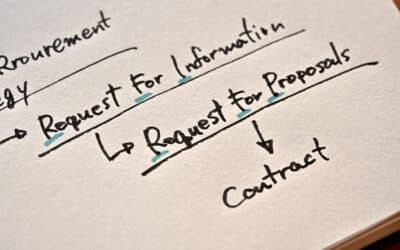Selecting the right company store based on your requirements is important and based on your product mix, an on-demand company store might be a great model to consider. Two primary models exist: the traditional company stores and the on-demand company stores. Understanding the differences between these models can help companies make informed decisions that save money and streamline operations.
Understanding the Two Models
Traditional Store Model:
- Pre-purchase Decorated Items: Items are pre-decorated with company logos and held in inventory.
- Pick, Pack, Ship: Orders are fulfilled from inventory on the shelf.
Challenges with Traditional Model:
- Limited Items: Limited variety due to financial constraints.
- High Inventory Costs: Significant capital tied up in inventory.
- Difficult Product Changes: High costs associated with replacing old inventory.
- Stock Issues: Frequent out-of-stock challenges, especially for specific sizes.
- Stale Products: Older products must be sold before introducing new ones, leading to potential obsolescence.
On-Demand Store Model:
- No Inventory: Items are produced only after an order is placed.
- Fast Production: Quick turnaround times for fulfilling orders.
Benefits of On-Demand Model:
- Unlimited Selection: Wide variety of styles and colors.
- Multiple Logo Options: Flexibility in logo customization.
- No Inventory Liability: No capital tied up in inventory.
- Easy Product Changes: Products can be updated without cost concerns.
- Consistent Stock: All sizes are almost always available.
- No Minimum Orders: Orders can be fulfilled regardless of quantity.
- Ideal for Multiple Logos: Great for companies with multiple logos
ROI Comparison: Traditional vs. On-Demand
Traditional Store ROI Considerations:
- Bulk Production Savings: Lower cost per item due to bulk production.
- Inventory Costs: Higher costs associated with storing inventory.
- Warehouse Expenses: Additional costs for warehouse space and management.
- Unsalable Inventory: Products that don’t sell must be donated or recycled.
On-Demand Store ROI Considerations:
- Single Item Production Cost: Slightly higher cost per item due to individual production.
- No Inventory Costs: Eliminates warehousing and carrying costs.
- Sustainability: No waste from unsold inventory, making it an environmentally friendly option.
Conclusion:
While traditional company stores may offer slightly lower per-item costs due to bulk production, the overall program cost is significantly higher. This is due to the substantial inventory and warehousing expenses, as well as the cost of unsold items. In contrast, on-demand company stores provide a more cost-effective solution by eliminating these additional expenses. The flexibility, sustainability, and efficiency of the on-demand model make it a superior choice for company stores. We have a calculator to see the cost of inventory vs. the iCoStore model of on-demand. It is a great tool to understand your potential liability.
Measuring the exact ROI can be complex, but feedback from businesses that have transitioned to on-demand stores consistently shows that this model is less expensive overall. The comprehensive benefits, from reduced financial risk to improved product availability, clearly indicate that on-demand company stores offer a better return on investment.
In summary, transitioning to an on-demand company company store is not only a better experience for employees but it also significantly reduces costs, providing a clear advantage over traditional company store models. Spend time searching for the right vendor to run your program, it is the first step to a successful program.



